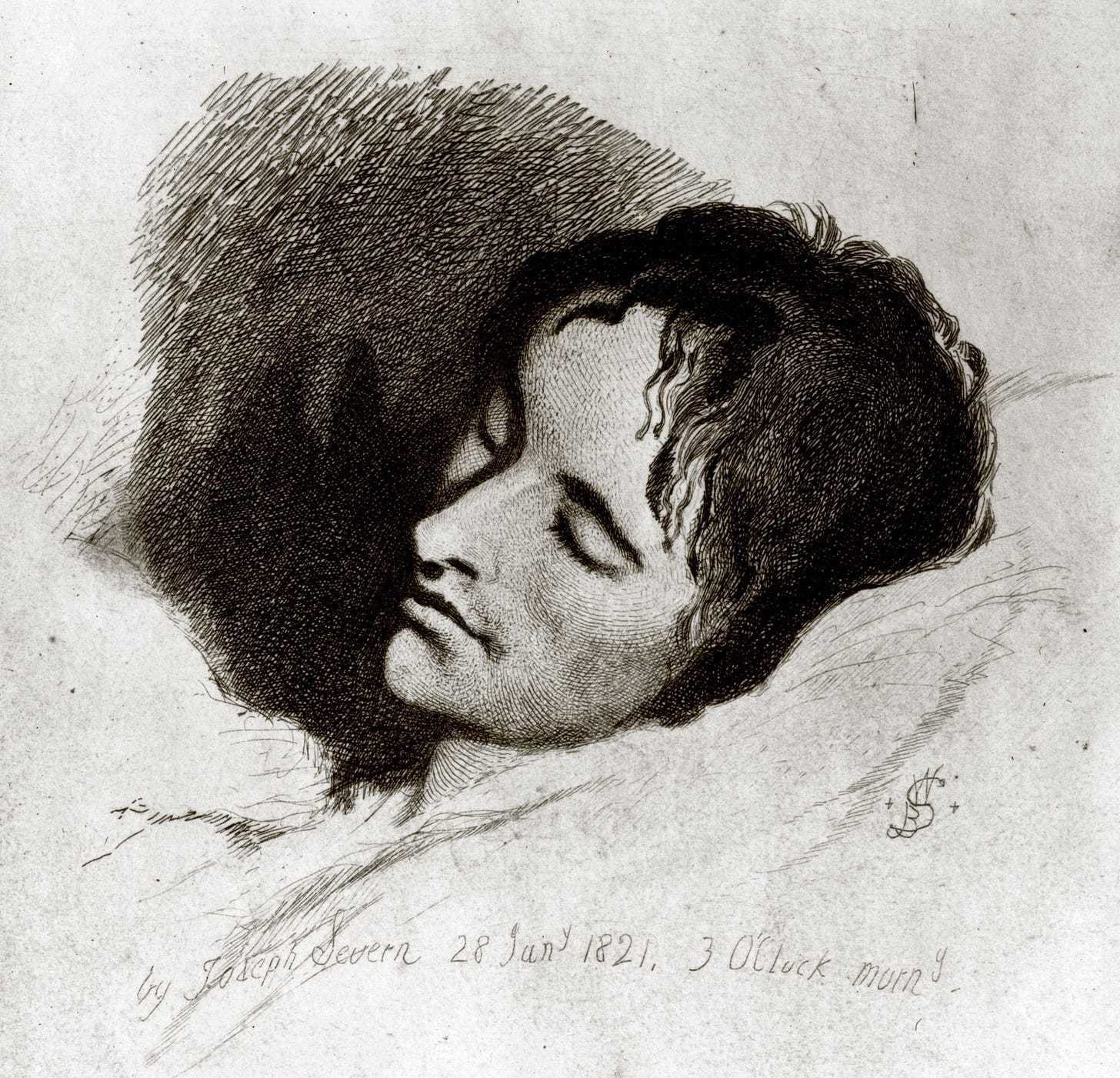Sketch of a Dying Keats
On January 28, 1821, at three in the morning, in Rome at 26 Piazza di Spagna, Joseph Severn draws a sketch of a dying John Keats to keep himself awake, writing how “a deadly sweat was on him all this night.”
John Keats suffering from tuberculosis, at the urging of his doctor and friends, had travelled to Rome, where it was hoped that his health would improve with the warmer climate. His health had not improved. The journey had further weakened him and deprived him of the help of family and friends. Only Severn had made the journey with him and through the last months had stayed by Keats’s side caring for his friend.
By the end of January there is no hope of recovery. Keats can no longer digest food, and coughs up blood-streaked fluids, which Severn describes as a “clay-like expectoration.” A friend of Severn brings Keats iced jelly to cool his throat. He is in such pain that Severn writes that “Keats is desiring his death with dreadful earnestness - the idea of death seems his only comfort - the only prospect of ease - he talks of it with delight.”
Death will come on February 23, 1821 some twenty-six days from when his friend Joseph Severn draws him as he sleeps two hundred years ago. Looking now at the drawing, Keats’s verse from an Ode to a Nightingale comes to mind:
Darkling I listen; and, for many a time
I have been half in love with easeful Death,
Call'd him soft names in many a mused rhyme,
To take into the air my quiet breath;
Now more than ever seems it rich to die,
To cease upon the midnight with no pain,
While thou art pouring forth thy soul abroad
In such an ecstasy!
Notes
John Keats: A New Life by Nicholas Roe (Yale University Press, New Haven and London, 2012)
John Keats's death-bed portrait ( Severn, Joseph, 1793-1879 (artist) at Keats-Shelley House, Rome.



